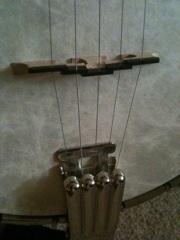The Byronic Ideal.
There is an image of the artist as a lonely individual wrestling with a recalcitrant muse somewhere on the periphery of society. This creature on the outside looking in and fashioning what he sees or feels into art that is then absorbed by that of which he cannot be a part. I have always had a love-hate relationship with this idea. There is something so alluring about this Byronic image that it pulls people in and allows them to create rich and full fantasies about what it must be like to feel that isolation and how that led to a piece of art. Yet, most people who create are not antisocial. The most serious artists fully understand that engagement with the community and culture is essential. After all, what is a piece of art without an audience? I would argue, without the requisite citations to greater minds than mine, that something that is created purely for personal pleasure and not for an audience can’t really cross the line that separates craft or recreation from art-with-a-capital-A.
The central thesis of my personal artistic creed is simple: intent. It is art if I intend for it to be. By virtue of presenting it to an audience I admit that I planned for someone else to experience it and therefore must have considered that during the creation of the work. How it is actually received is another matter but the fact that it was presented is the key. It proves that I am a part of the culture and community and there can be no claim that I am somehow outside. To say that would imply that I am somehow immune to the influence of the culture and yet am adding to the body of work that creates it. That feels silly.
Instead, the model that seems to make the most sense is the artist as canary. Perhaps the creative spirit is more in tune with its environment and is better able to express the things which are so obvious as to go unnoticed. This puts the artist in opposition to the Byronic hero model in that now there is a hypersensitivity and awareness to everything in the culture. Thus art becomes less of an objective observation and more of a deeply felt reaction.
As my personal beliefs fall on the side of the reaction, I see that the artist needs an audience and in this age, the audience needs the artist.
Enter the Internet.
In some small but real way the Internet has become the great equalizer (a lovely cliche in 2009!). Given that an individual has the financial wherewithal to have access to a computer and the Internet, it is possible to share creative works with an astoundingly large audience. A writer needs only to set up a web presence, and with certain free services and social networking sites this is incredibly simple, and place work in the open. A composer can place sound files or scores online. An artist has the ability to create a gallery space. None of these is ideal. There isn’t the feedback of the physical book or a concert hall or even the traditional gallery space, but the work can reach an audience.Â
There will be no discussion here about the quality of the work or the audience. That has been beaten to death by critics and various organizations with a significant state in the status quo. Yes, more access means more work of lesser quality. Without some sort of cultural gatekeeper the audience may be subjected to some poor examples of art. But is that single nugget of gold worth all of the silt in the stream? And how many such nuggets of gold might have gone unseen? I say we should err on the side of too much and let time sort it out as it always does.
My primary concern is with the connections between the creative minds. The culture we inhabit today is a far cry from even 50 years ago when people knew and regularly socialized with their neighbors. It is even further removed from the time of community functions that brought together people from great distances to enjoy large celebrations. The closest we come today might be greeting our neighbors as they light fireworks in the street on New Year’s Eve.
There is also the restriction of the current standard of living. To live the way we do requires the expenditure of a great deal of effort. This means more painters working in offices and more musicians programming computers. The Internet provides a place for people who are physically separated to come together asynchronously. Today it is easy to follow a group of blogs in a few minutes. One can keep up with interesting trends and there are enough people publishing their work this way as to create a steady diet for anyone who has an appetite. In many cases, the most insatiable appetites belong to other artists.
This is a key component that makes publishing on the Internet so important. Artists need other artists. The input that can only be gotten in the form of other creative work is so important to personal artistic development. The creator is in the position to reach an audience in the generic sense and also to get feedback and input from other minds. This can’t be ignored.
Islands.
With the advent of the blog and RSS feeds, the people who are putting loving detail into their work in a spare bedroom at odd hours are able to share with the world. In turn, through comments and perhaps counter-posts on other blogs, the world gives back. This give and take inspires continued work and discussion. It promotes creativity and connects these islands in a very real and tangible sense.
I know of plenty of people who are in the same boat that I am. There is the day job that eats 11+ hours. There are meals to plan, a household to run, a family to raise. But that urge to create something else bubbles up and claims maybe an hour or two out of what’s left. This is what I used to call my “other time” and what eventually became my personal website.Â
A spare bedroom becomes a studio. A laptop turns into a portfolio. Resources are arranged in a way as to allow for that creative energy to find release. A new instrument is learned because the available time is not contiguous or a connection can’t be made with another musician. One person slowly becomes an ensemble. An entire creative ecosystem is created, terrarium-style, in the available space and time. With the Internet, cross pollination becomes possible. Collaborations begin. Someone takes a piece and turns it into something new. An illustrator teams up with a distant writer. Musicians work asynchronously to create pieces together. Beautiful things move from possibility to reality because some of the restrictions on time and space are relaxed.
I won’t begin to touch on what putting that work out in the open creates in terms of new possibilities. “Mash-up” and other derivative works can generate new genres and more importantly add new life to the art that is being created around us. It is a great time to be a creative mind. Limitations are few and opportunities are many.

